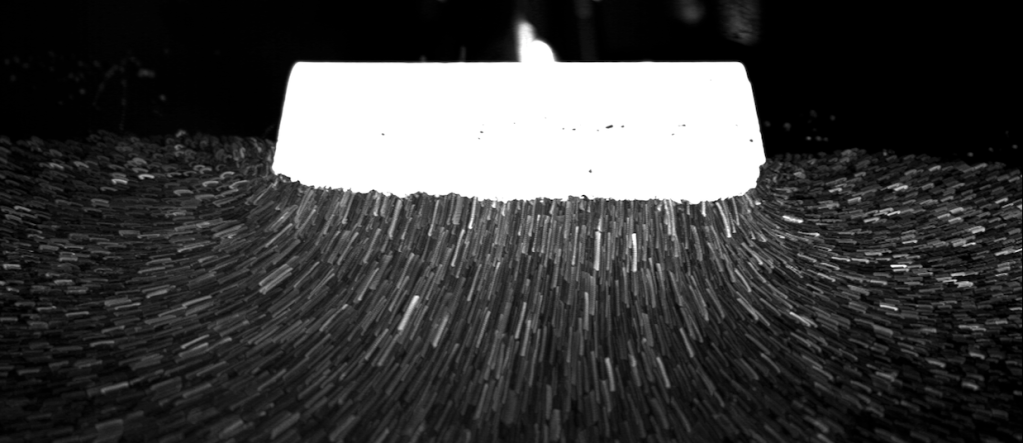As part of my PhD research, my collaborators and I investigated how robots can dynamically jump on granular media like sand. Through an integrated data science approach combining experiments, imaging, and modeling, we uncovered new physics insights that enabled better jumping performance, published here.
Experiments and analysis
Our goal was to understand the complex interactions when a robot actively propels itself into a dynamically deformable granular material like sand or soil. To systematically study this, we built a simple spring-loaded jumping robot that we could program to do “push-off” jumps on a bed of poppy seeds.

By varying the jump parameters and compactness of the seeds, we tested different jumping strategies. However, we found that traditional models of granular forces during penetration failed to explain the robot’s jumping dynamics. There was significant discrepancy between model predictions and the experimental results.
To resolve this, I captured high-speed video of the granular flow using particle image velocimetry (PIV). The PIV analysis generated spatial velocity fields showing how the grains flowed when the robot foot pushed into them. Calculating shear strain rates visualized the rapid formation of a jammed granular cone beneath the foot.


By extracting momentum and added mass from the PIV data, I quantified how the foot displaced and accelerated the grains like a virtual added mass. Fitting the measurements revealed the dynamics of this virtual mass accumulation.

Modeling and simulation
I used insights from the PIV-derived geometry and momentum transfer to inform new models for the granular reaction forces experienced by the robot. Incorporating depth-varying inertial drag and added mass into the force relations significantly improved model agreement with experiments.
To further supplement our analysis, I simulated the granular interactions in 2D using a simple discrete element method (DEM) model. Despite limitations in capturing all physics, the DEM provided additional insights into the geometry of the shear bands and jamming front.


Impact
By taking an integrated data science approach combining robotics experiments, imaging, spatial data analysis, model parameterization, simulation, and physics-based modeling, I uncovered new relationships that had previously confounded traditional models. The improved models revealed principles that enabled dynamic robotic jumping on loose granular terrain like sand.
This cross-disciplinary research exemplifies how data science techniques like image analysis, simulation, and data-driven modeling can work together with robotics and physics to extract new scientific insights. The integrated use of various data-driven methods was critical to discovering the key physics principles that allowed the robot to successfully jump on deformable granular media.

